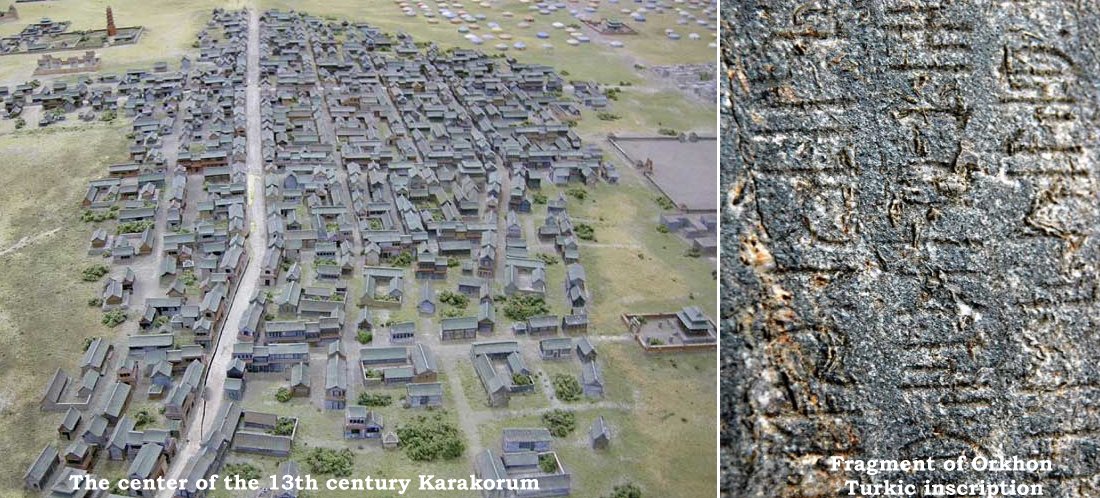Karakorum – Genghis Khan’s Headquarters And Important City In History Of Silk Road
A. Sutherland - AncientPages.com - Karakorum was first settled about 750. In 1220, Genghis Khan, the great Mongol conqueror, founded his headquarters there and used it as a base for his invasion of China.
Despite its small size and remote location, it was one of the most important cities in the history of the Silk Road because it was strategically located on the most important east-west route across Mongolia.
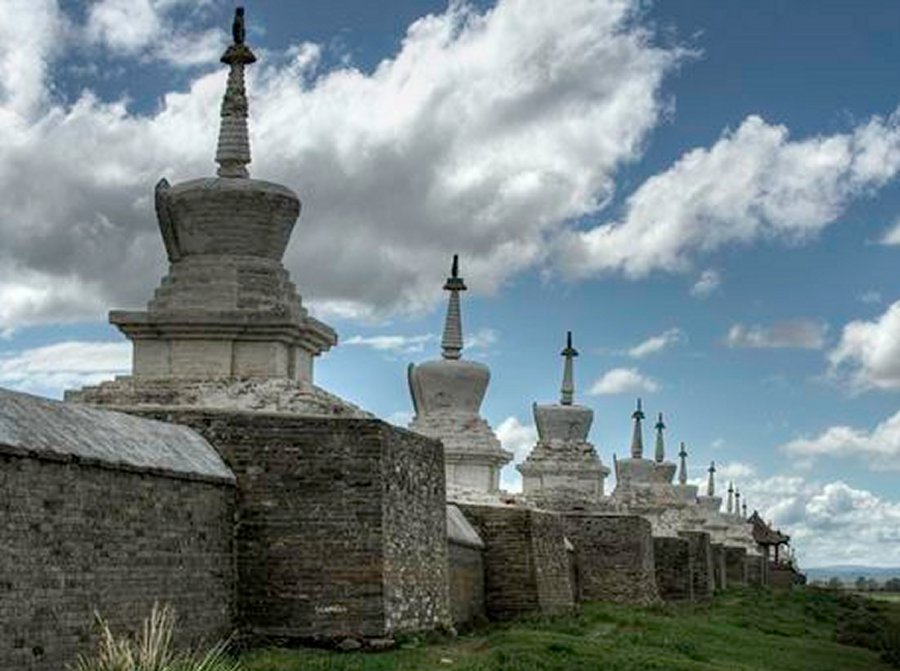
The Buddhist Tibetan monastery that dates back to 1585, was built from the ruins of Genghis Khan's capital and Erdene Zuu is the oldest surviving monastery in Mongolia. Today, the monastery serves only as a museum.
Genghis Khan made it a capital because of its’ strategic location on ancient trade routes. Karakorum is located 360 kilometers southwest of Ulan Bator, on Mongolia's main east-west route.
Today, there are only ruins of this ancient city that once was the important center of extensive and growing empire.
The city has been destroyed several times since Genghis Khan's day. But in Mongolia, Karakorum remains a powerful symbol of past glory.
In 1235 Genghis Khan’s third son and successor, Ögödei, expanded Karakorum and built defensive walls around it along with a rectangular palace supported by 64 wooden columns standing on granite bases.
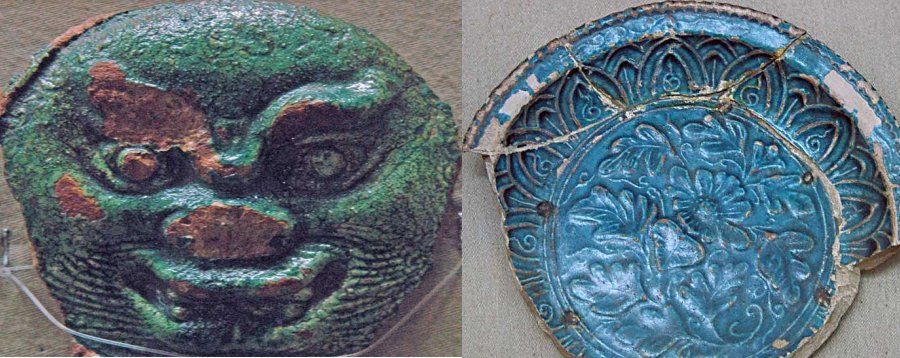
Karakorum was not important strategically but with the Orkhon River valley was considered a sacred homeland by steppe peoples. The famous Orkhon Turkic inscriptions, some of the earliest texts in early Turkish, mark the burial sites. Credits: University of Washington
Many brick buildings, 12 shamanistic shrines, and two mosques were once part of the city, which also was an early center for sculpture, especially noteworthy for its great stone tortoises.
The city flourished only for some three decades before the next chapter began in Karakoum’s history.
Kublai Khan, the grandson of Genghis Khan, who conquered China, and became the first emperor of the country's Yuan Dynasty, moved the capital to modern day Beijing in 1264. Karakorum served as a center for Kublai’s rival, his younger brother till 1271.
In the Battle of Puir Nor in 1388, Chinese forces under the leadership of the emperor Hung-wu invaded Mongolia and won a decisive victory. They captured 70,000 Mongols and destroyed the ancient city of Karakorum, which was later rebuilt but only partially .
Finally, it was abandoned.
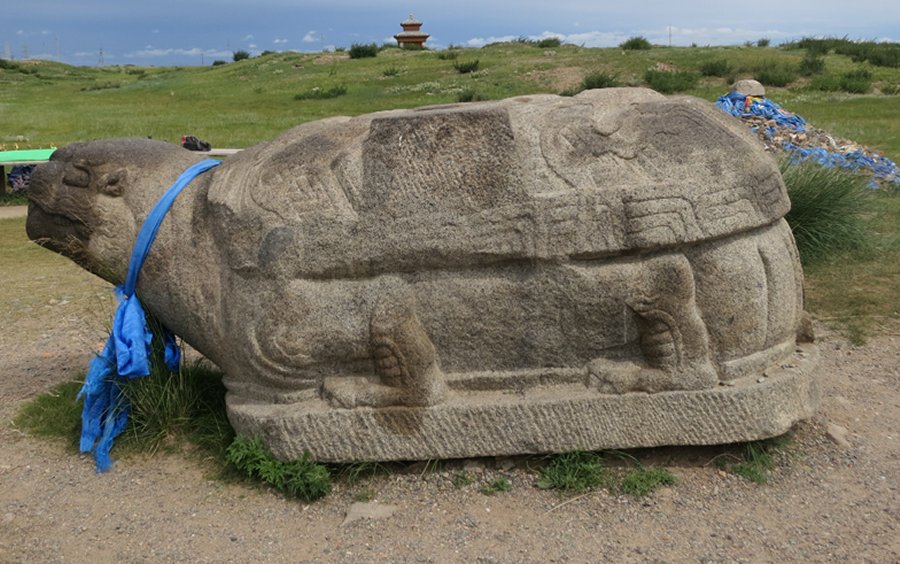
About the only intact remnant of Karakorum is this stone turtle, one of four that marked the city's corners.
Two Russian researchers determined the exact location of Karakorum in 1889 and the ruins were further explored in 1948-1949. The remains of Ögödei’s palace and the remains of a late 12th- or early 13th-century Buddhist shrine were found in the southwestern part of the city.
The Buddhist Tibetan monastery that dates back to 1585, was built from the ruins of Genghis Khan's capital and Erdene Zuu is the oldest surviving monastery in Mongolia.
Today, the monastery serves only as a museum.
See also:
Mysterious Standing Deer Stones Of Mongolia – Their Purpose And Creators Remain Unknown
Ruins Of 2,300-Year-Old City Of Jiaohe On The Silk Road
Sir Marc Aurel Stein: Famous Fascinating Expeditions To Ancient Places Of The Silk Road
Both written and archaeological evidence about Karakorum tell us a great deal about the commercial and cultural interactions across Eurasia, in which the Mongols played an important role.
Karakorum was not only important strategically but with the Orkhon River valley was considered a sacred homeland by steppe peoples. The famous Orkhon Turkic inscriptions, some of the earliest texts in early Turkish, mark the burial sites.
Tamim Ibn Bahr, an Arab ambassador in 821 who visited the city, wrote:
"From a distance of five farsakhs before he arrived in the town of the khaqan he caught sight of a tent belonging to the king, made of gold. It stands on the flat top of his castle and can hold 100 men..."
Outside the royal compound was a sprawling settled area occupying as much as 7 x 2.5 km, partly enclosed with lower walls and containing numerous houses. Tamim Ibn Bahr noted:
"…this is a great town, rich in agriculture and surrounded by rustaqs full of cultivation and villages lying close together. The town has twelve iron gates of huge size. The town is populous and thickly crowded and has markets and various trades. Among its population, the Zindiq religion prevails."
Archaeological finds have confirmed that Karakorum had a flourishing local agriculture, several millstones, pestles and irrigation canals; some burials contain grains of millet.
Written by – A. Sutherland AncientPages.com Staff Writer
Copyright © AncientPages.com All rights reserved. This material may not be published, broadcast, rewritten or redistributed in whole or part without the express written permission of AncientPages.com
Expand for referencesMore From Ancient Pages
-
 Legend Of The Four Dragons That Disobeyed The Jade Emperor And Gave China Water
Chinese Mythology | Feb 22, 2019
Legend Of The Four Dragons That Disobeyed The Jade Emperor And Gave China Water
Chinese Mythology | Feb 22, 2019 -
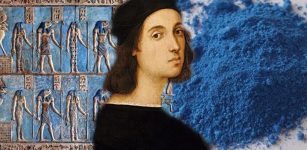 Fresco Reveals Renaissance Genius Raphael Used Egyptian Blue – World’s Oldest Artificial Pigment
News | Sep 8, 2020
Fresco Reveals Renaissance Genius Raphael Used Egyptian Blue – World’s Oldest Artificial Pigment
News | Sep 8, 2020 -
 Carved Symbols Related To The Galician Castro Culture Discovered At Castro de San Vicenzo, Orense, Spain
Archaeology | Oct 11, 2024
Carved Symbols Related To The Galician Castro Culture Discovered At Castro de San Vicenzo, Orense, Spain
Archaeology | Oct 11, 2024 -
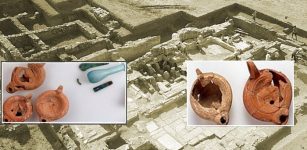 Advanced Heating System Discovered In Ruins Of Metropolis ‘City Of Mother Goddess’
Archaeology | Nov 17, 2019
Advanced Heating System Discovered In Ruins Of Metropolis ‘City Of Mother Goddess’
Archaeology | Nov 17, 2019 -
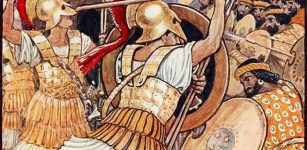 On This Day In History: Battle Of Marathon Was Fought – On Sep 12, 490 BC
News | Sep 12, 2016
On This Day In History: Battle Of Marathon Was Fought – On Sep 12, 490 BC
News | Sep 12, 2016 -
 Selene – Greek Goddess Of The Moon And Myth About Love, Jealousy And Punishment
Featured Stories | Jan 24, 2019
Selene – Greek Goddess Of The Moon And Myth About Love, Jealousy And Punishment
Featured Stories | Jan 24, 2019 -
 Magnificent Ancient Treasures Of The Mysterious Kangju Kingdom Found By Archaeologists
Archaeology | Jun 11, 2024
Magnificent Ancient Treasures Of The Mysterious Kangju Kingdom Found By Archaeologists
Archaeology | Jun 11, 2024 -
 Mystery Of An ‘Impossible’ Event In Georgia Linked To An Unusual Woman
Featured Stories | May 15, 2024
Mystery Of An ‘Impossible’ Event In Georgia Linked To An Unusual Woman
Featured Stories | May 15, 2024 -
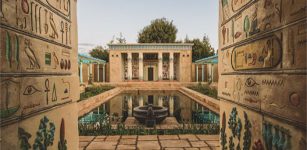 World’s First Recreated Ancient Egyptian Garden Is Now Open To The Public
News | May 17, 2022
World’s First Recreated Ancient Egyptian Garden Is Now Open To The Public
News | May 17, 2022 -
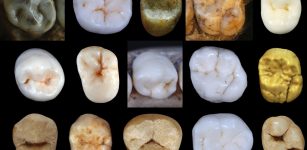 Neanderthals And Modern Humans Diverged At Least 800,000 Years Ago
Archaeology | May 17, 2019
Neanderthals And Modern Humans Diverged At Least 800,000 Years Ago
Archaeology | May 17, 2019 -
 Incredible 2,300-Year-Old Roman-Etruscan Time Capsule Opened In San Casciano dei Bagni, Italy
Featured Stories | Dec 20, 2023
Incredible 2,300-Year-Old Roman-Etruscan Time Capsule Opened In San Casciano dei Bagni, Italy
Featured Stories | Dec 20, 2023 -
 Thor: Brave And Mighty Thunder God In Norse Mythology
Featured Stories | Nov 7, 2016
Thor: Brave And Mighty Thunder God In Norse Mythology
Featured Stories | Nov 7, 2016 -
 A 19th-Century Sailing Ship Loaded With Champagne, Wine, Porcelain And Mineral Water Found At The Bottom Of The Baltic Sea
Underwater Discoveries | Jul 25, 2024
A 19th-Century Sailing Ship Loaded With Champagne, Wine, Porcelain And Mineral Water Found At The Bottom Of The Baltic Sea
Underwater Discoveries | Jul 25, 2024 -
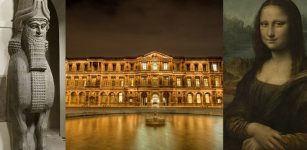 Louvre Museum’s Entire Collection Is Now Available Online To Anyone
News | Mar 31, 2021
Louvre Museum’s Entire Collection Is Now Available Online To Anyone
News | Mar 31, 2021 -
 Was Ancient Egyptian Science Inherited From A Lost Atlantean Civilization?
Ancient Mysteries | Sep 4, 2017
Was Ancient Egyptian Science Inherited From A Lost Atlantean Civilization?
Ancient Mysteries | Sep 4, 2017 -
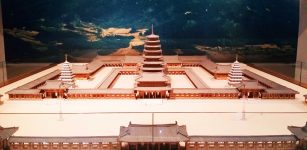 Mireuksa Pagoda: Largest And One Of The Oldest Of Korean Pagodas
Archaeology | Jan 1, 2016
Mireuksa Pagoda: Largest And One Of The Oldest Of Korean Pagodas
Archaeology | Jan 1, 2016 -
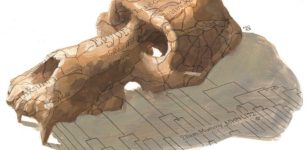 Can Baboons Solve The Ancient Mystery Of Punt?
Archaeology | Oct 25, 2023
Can Baboons Solve The Ancient Mystery Of Punt?
Archaeology | Oct 25, 2023 -
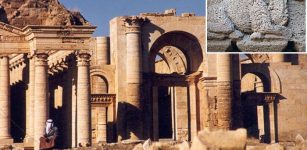 Hybrid Camels Revealed In Ancient Arab Temple Art At Hatra, Northern Iraq
Archaeology | Mar 15, 2022
Hybrid Camels Revealed In Ancient Arab Temple Art At Hatra, Northern Iraq
Archaeology | Mar 15, 2022 -
 Was Tintagel Castle A Fortress Used By Iconic Hero King Arthur?
Ancient Mysteries | Mar 12, 2016
Was Tintagel Castle A Fortress Used By Iconic Hero King Arthur?
Ancient Mysteries | Mar 12, 2016 -
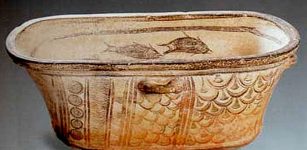 Was Hygiene Important For Our Ancestors?
Featured Stories | Feb 11, 2017
Was Hygiene Important For Our Ancestors?
Featured Stories | Feb 11, 2017

